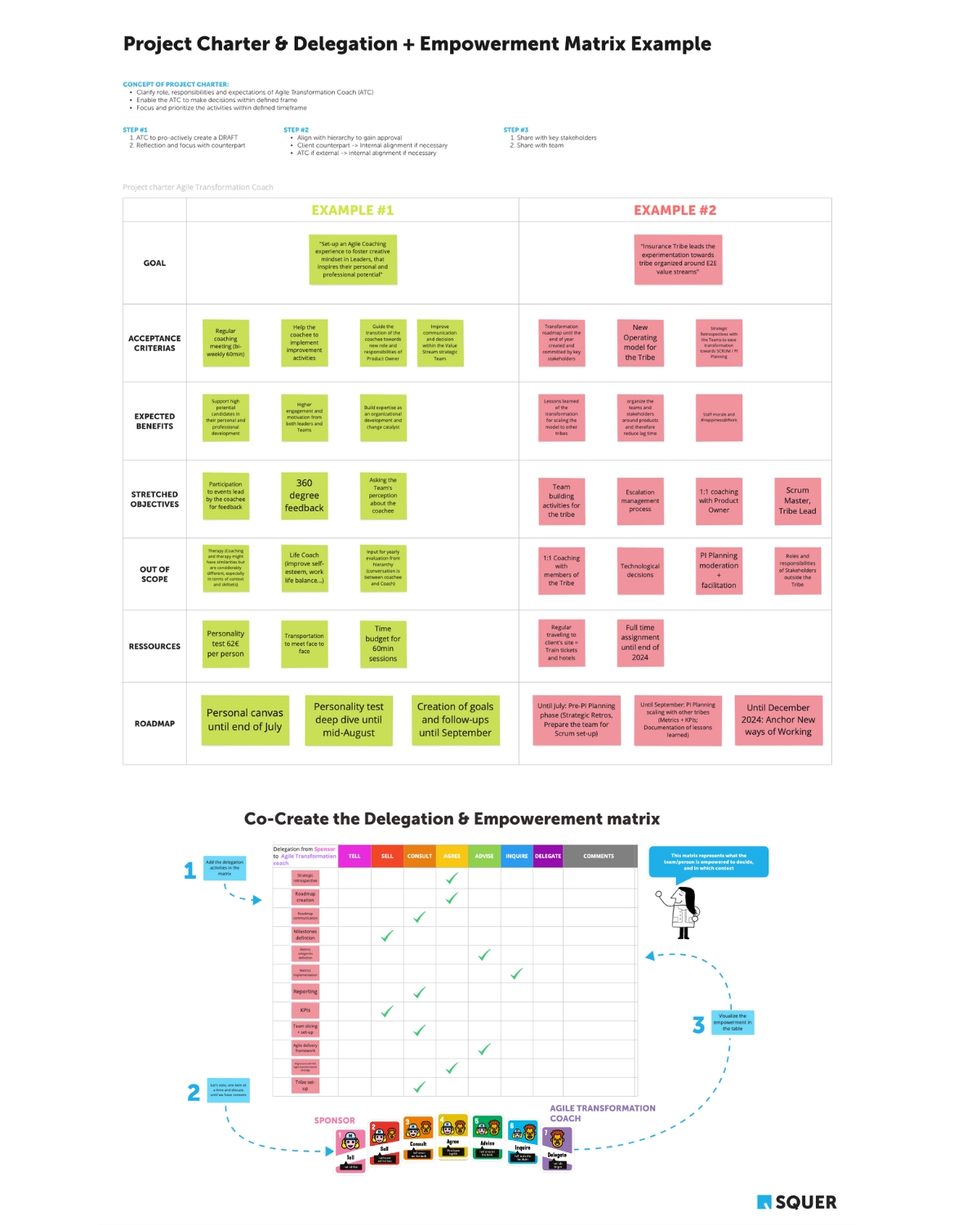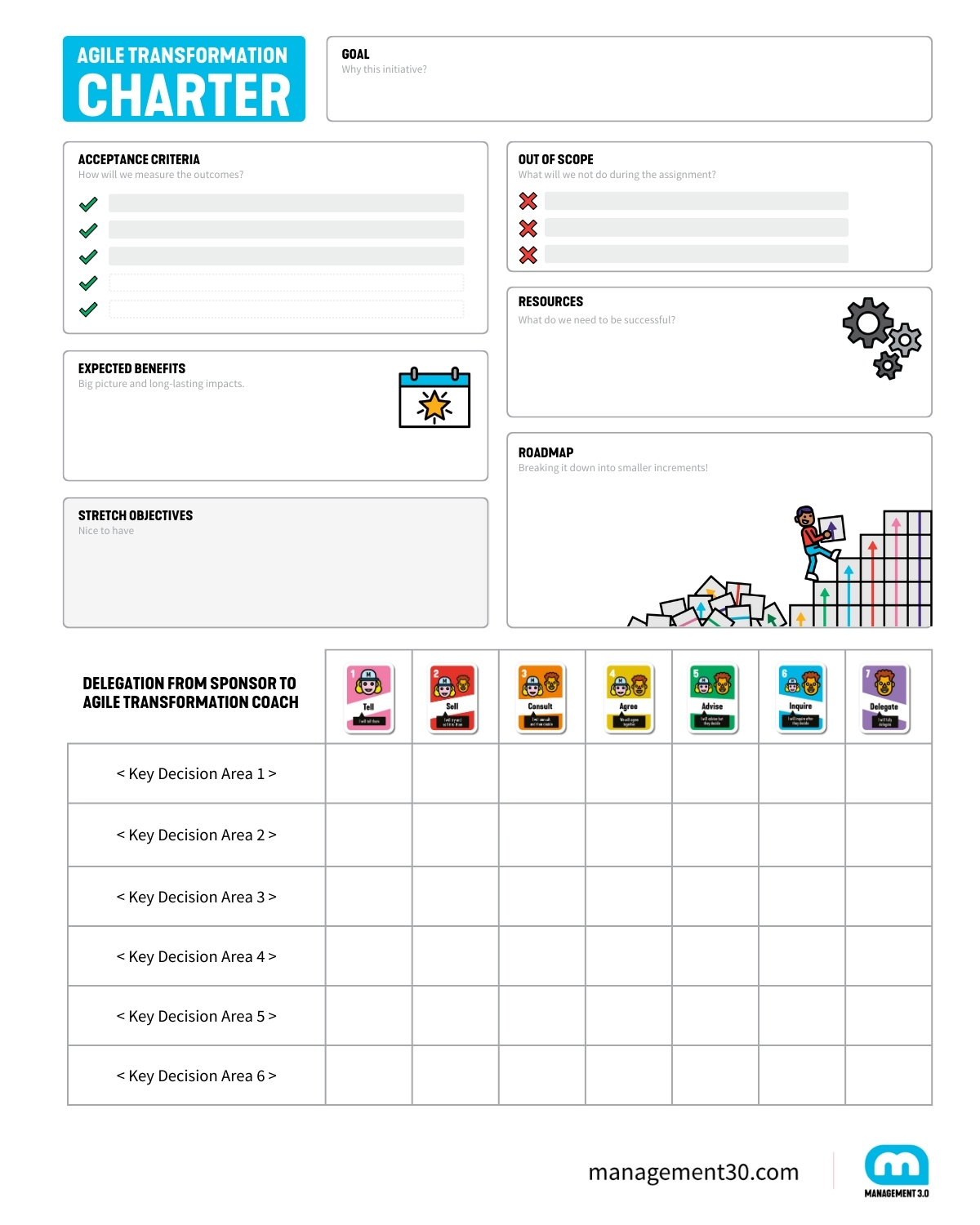Unlock the secrets to a successful transformation journey with proven practices. Learn how to set clear goals, measure outcomes, and navigate challenges effectively. This guide will help you align teams, manage expectations, and ensure impactful results as you embark on your transformation journey.
Written by David Cuillé, a Management 3.0 Community Member and PMP-certified Agile Transformation Coach from Austria, this article shares valuable insights into starting a successful transformation journey. With years of experience in project management and agile transformation, David is well-equipped to guide you through this process. His expertise is backed by two advanced degrees and top industry certifications.
As an Agile coach, companies often seek my services with a specific goal: to transform their current system into something better and faster. Sometimes, this goal is clearly defined through polished PowerPoint slides. Other times, it isn’t.
The start of the transformation journey is never the same; the industry, context, and starting point of the engagement are always different.
Today, I would like to share my best practice, the one I start all my new assignments with. Over the years, I’ve shared this practice with clients and fellow Agile coaches, who helped me refine it and who, in turn, shared it with their teams. It will help you create a healthy working agreement with your sponsors, clarify your role and expectations in a dynamic, ever-changing environment of competing priorities, and realize the full potential of your ambitions!
The journey towards product-oriented organizations, which focus on aligning teams and processes around specific products rather than functions, can be challenging, time-consuming, and transformative for any organization. Companies embark on this journey to enhance agility, improve customer focus, and drive innovation, ultimately leading to more efficient and effective value delivery.
If an organization’s processes are the heart of any operating model—how a company organizes its people, processes, and technology to deliver value—then the people and their interactions are its soul. Through their daily work, people bring the vision of the transformation to reality, anchoring new ways of working as the company’s new culture.
Once the decision for transformation has been made, where should we begin?
Whether you are an internal change agent or an external consultant, your first steps (of what feels like a thousand-mile journey) will set the tone and pace for entire teams, departments, and divisions, leading decision-makers toward the best possible outcomes.
The journey of a thousand miles begins with one single step.
Lao Tzu
In this article, I will share with you best practices to get you started, so you can both lead and enjoy the transformational journey, no matter how long it may take your organization to achieve it 😉
Focus on the journey, not the destination. Joy is not found in finishing an activity but in doing it.
Greg Anderson
“What is my purpose?”
As a transformation leader, there’s a good chance that you have direct contact with the C-level. The purpose, scale, and ambition of the transformation should have been presented to you, as well as the expectations of your role.
Also read: Bridging the Gap: Introducing Management 3.0 to C-Level Executives
Did you know that unclear roles and responsibilities, lack of empowerment, and lack of meaning behind a role are among the top 5 reasons for job dissatisfaction? As a Delivery Lead or Agile Coach for transformation, how can you prevent this from happening to you?
I want to focus on the following two practices: “The Charter” from the Project Management Institute (PMI) and the Delegation Board from Management 3.0 (which I like to call the “Delegation & Empowerment Matrix”). Both are largely inspired by the original source material, yet adjusted to fit our purpose: getting you the mandate to be the empowered change agent you’ve always wanted to be!
The Charter
The PMBOK® Guide, 3rd Edition defines a project charter as “a document issued by the project initiator or sponsor that formally authorizes the existence of a project and provides the project manager with the authority to apply organizational resources to project activities.” (PMI, 2004, 368)
Simply put, the Charter is your mandate to lead transformation, reach out to other teams, and set clear expectations with your sponsor(s). After years of best practices, I recommend co-creating the Charter. Not only is this one of the core principles of Management 3.0, but it is also a great way to lead the conversation with your internal and/or external counterpart, clear misunderstandings, and prioritize your activities.
Goal: WHY this initiative?
This can be the most challenging part of the Charter, and I recommend an incremental approach here.
Start with an initial formulation, then move on to the next parts of the Charter and come back to it at the end—again and again, if necessary.
Why? You want it to be outcome-oriented rather than output-oriented. Outcome-oriented goals focus on the impact and value generated by the initiative, like improved customer satisfaction. In contrast, output-oriented goals focus on specific deliverables, like the number of training sessions conducted.
As a change agent, your goal should be to generate value and impact within the system. You will also need enough flexibility during the assignment to navigate shifting priorities at a rapid pace.

Acceptance Criteria: HOW will we measure the outcomes?
In Agile, teams of developers must define and agree on acceptance criteria before starting to code. This helps narrow down expectations and avoid “gold plating” the software with unnecessary functionalities. In your case, it will do the same. I recommend limiting the acceptance criteria to five per Charter.
Be aware that the more acceptance criteria you add to the Charter, the more complex it will be to deliver them all, and the less focused your role will be. If the specifics of the transformation require more, you can either prioritize the acceptance criteria or, even better, add a timeline to the Charter.
Create a 3-6 month Charter with a clear, dedicated focus. Complete it, and then create a new one. This will also allow you to break down the transformation into a roadmap with clear start-end phases and expectations for each one. I recommend using “Risk-based milestones.”
Expected Benefits: Big picture and long-lasting impacts.
Why should your sponsor invest time and resources in this initiative?
Just like with any business case, we should aim to deliver value to the system. The initial stages of transformation will be challenging. Focusing on the long-term benefits will help stakeholders remember why we are going through the trouble at all.
Stretch Objectives: Nice to have
Managing stakeholders’ expectations will be an important part of your work, so don’t promise them the moon—only what you can deliver! This category will help you focus on your Charter’s essential acceptance criteria.
If you find extra time during the assignment, there’s nothing wrong with going above and beyond!
Out of Scope: Know your limits.
What will you not do during the assignment? The Charter helps you define the frame of your role and responsibilities, so where should you draw the line?
You should develop a charter proposal for your sponsor; this will allow you to drive the conversation and set boundaries proactively. Sometimes, you don’t feel you have the necessary skills for it, or it would take too much effort. You may consider doing the out-of-scope parts of the Charter in the next phase or delegating them to another department, team, or person.
Resources: What do you need to be successful?
I recommend you stay high-level and not over-engineer this part. From experience, this can include new software that the transformation team will need or support from a secretary to type up meeting minutes. In any case, asking beforehand about what you need to be successful reduces stakeholders’ stress and gives them transparency on the costs.
Roadmap: Break it down into smaller increments!
Your Charter may take multiple months to complete, so breaking it down into smaller, achievable parts will help you maintain a sustainable pace—for yourself, your sponsors, and the team(s). At the beginning of a transformation, you may want to solve all issues at once or work on multiple dimensions at the same time. Rather than starting a lot and delivering little, I recommend you focus your energies and create a high-level plan of where your priorities and focus should go.
This will also enable you to ask your sponsor(s) for regular feedback and manage their expectations. I recommend creating a “transformation roadmap” for the overall transformation project using a dedicated tool like JIRA or a Gantt chart.
Delegation and Empowerment Matrix: It is so important that it has its own section!
I saved the most important part of the Charter for last: as a change agent, what are you empowered to decide? And this is where Management 3.0 comes in. How far can you go in making your decisions without asking your sponsor(s) for permission? As a Delivery Lead or Agile Coach, part of the assignment will be to navigate the internal currents of the system and drive change. This will lead you to interact with other teams, departments, and divisions and coordinate their efforts and priorities.
Defining beforehand with your sponsor how far you may trigger the immune system of the organization is not just a best practice but a MUST:
- Don’t waste time with politics: if someone is unsatisfied with your actions, they can escalate to your sponsor(s).
- If you stay within the agreed-upon scope of the Charter, you are doing your job—nothing more, nothing less.
- Keep your stakeholders in the loop according to the Delegation Board.
- Transparency about what you may actually decide in full autonomy will help you see how empowered you really are when you start the transformation.
Delegation and Empowerment Matrix
Much has been said about the Delegation Board from Management 3.0. The Delegation and Empowerment module, introducing the Delegation Board as a practice, is an important training pillar of the Management 3.0 Foundation Workshop.


